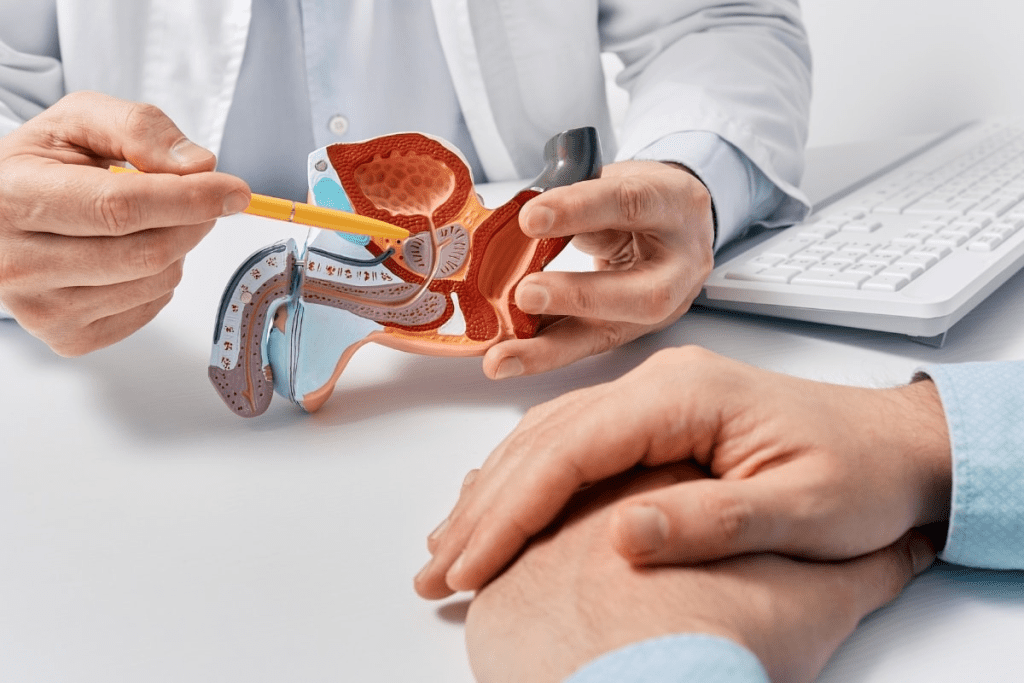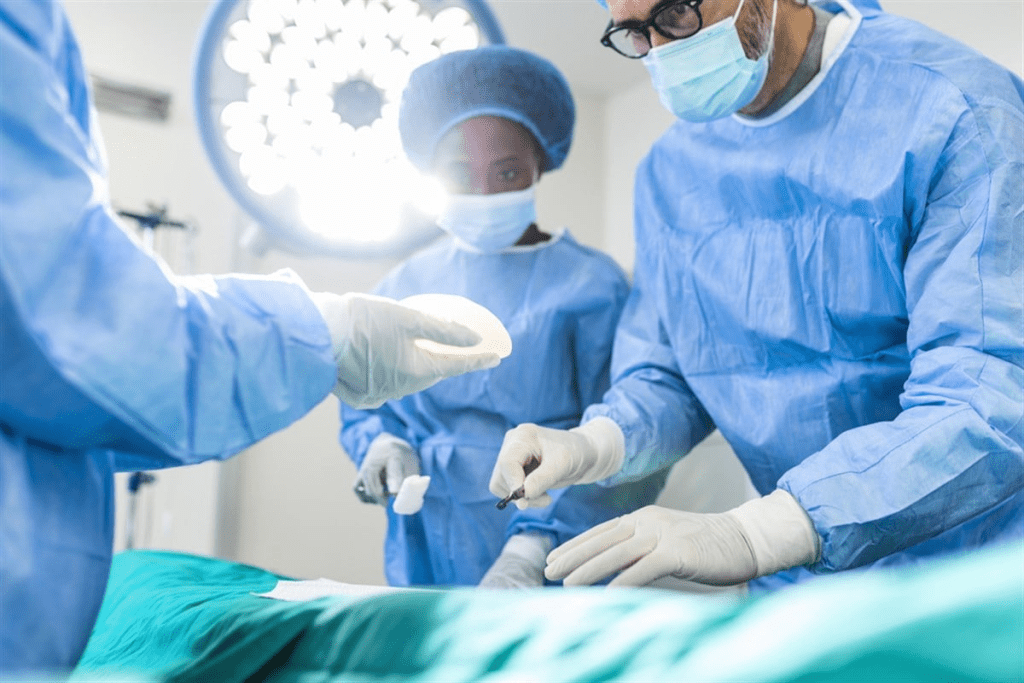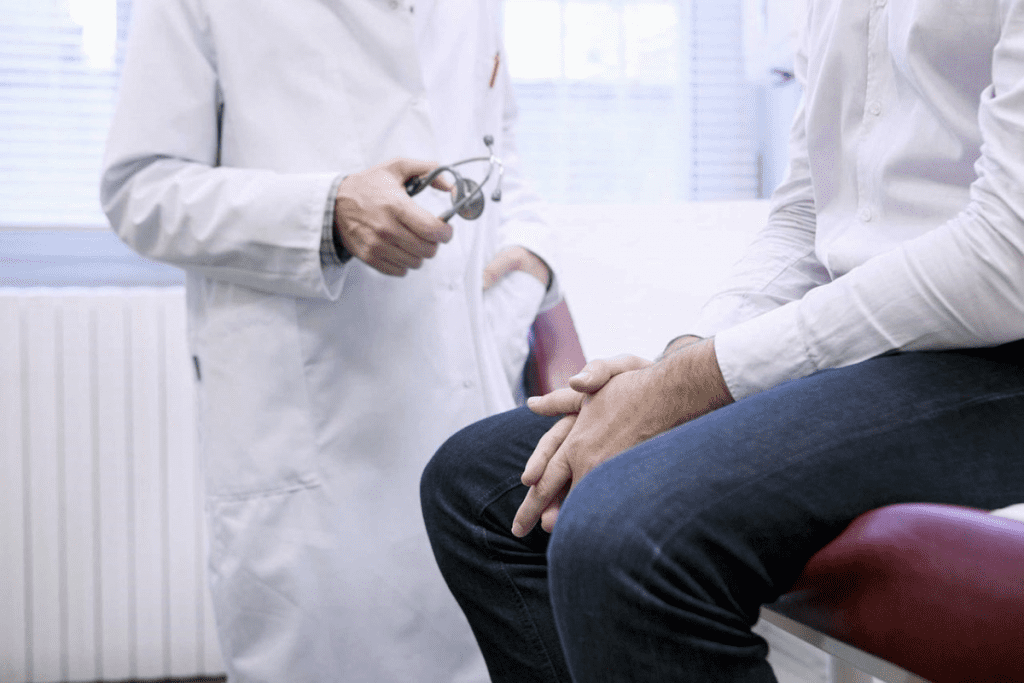Last Updated on October 31, 2025 by

Prostate removal surgery, also known as prostatectomy, is a big deal. It’s often done to treat prostate cancer. At Liv Hospital, we know it’s scary to think about.
But new surgical methods have made things better. For example, robotic-assisted prostatectomy has improved results. Studies show it cuts down on surgery time and blood loss.
The prostate gland is key to the male reproductive system. It makes seminal fluid and surrounds the urethra. Knowing its role and when it might need to be removed is important for health.
The prostate gland makes seminal fluid, which feeds sperm and helps them move during ejaculation. This is vital for male fertility. It also helps with urination by being around the urethra, the tube for urine.
Keeping the prostate gland healthy is important for men. Regular check-ups and screenings can spot problems early. This allows for quick action if needed.
Removing the prostate, or prostatectomy, might be needed for several reasons. Prostate cancer is a main reason for this surgery, as it can save lives. Other issues, like BPH, where the prostate gets too big and blocks urine, also might need surgery.
Diagnosing prostate problems involves physical exams, medical history, and tests. PSA (Prostate-Specific Antigen) testing is often used to find prostate issues, like cancer. MRI and ultrasound might also be used to check the prostate.
Getting the right diagnosis is key to treatment. We create a treatment plan that fits each patient’s needs.

At Liv Hospital, we have a detailed care plan for radical prostatectomy. This surgery removes the prostate gland and some nearby tissue. It’s a big operation that needs careful thought and preparation.
Radical prostatectomy is a major surgery because of its complexity and risks. The team doing the surgery must be very skilled. Removing the prostate gland and nearby tissues can greatly affect a patient’s life after surgery. So, it’s important to check patients well before surgery.
Getting ready for surgery is a key part of radical prostatectomy. Our team does detailed checks to see how healthy the patient is and how big the prostate problem is. We use many tests and exams to find the best way to operate. At Liv Hospital, we focus on personalized care to make sure each patient is ready for surgery.
The success of radical prostatectomy depends on the surgical team’s skill. Our team at Liv Hospital includes top urologists, anesthesiologists, and nurses. Working together, they make sure all parts of the patient’s health are looked after during surgery. This teamwork is essential for the best results for our patients.
In summary, radical prostatectomy is a big surgery that needs careful planning, a skilled team, and thorough checks before surgery. At Liv Hospital, we aim to give our patients the best care at every step.
Prostatectomy surgery has changed a lot, giving patients many options. At Liv Hospital, we keep up with new techniques to help our patients. The right surgery depends on the patient’s health, cancer stage, and the surgeon’s skills.
Open radical prostatectomy is a traditional surgery. It removes the prostate through one big cut in the belly. This method lets the surgeon see the prostate clearly, which is important for tricky cases. But it means a longer recovery time than newer methods.
Laparoscopic prostatectomy uses small cuts and a camera. This minimally invasive way cuts down on blood loss and speeds up healing. It needs a lot of skill, as the surgeon works on a monitor.
Robotic-assisted radical prostatectomy is very common, making up about 94.8% of surgeries in the US. It uses a robot to help the surgeon, giving high-definition 3D images and precise control. This method can help avoid problems like incontinence and erectile issues.
This surgery has many benefits, like less blood loss, smaller cuts, and quicker recovery. Our surgeons are experts in robotic surgery, giving our patients the best care.
At Liv Hospital, we know every patient is different. We work with each patient to find the best surgery for them.
Thinking about prostate surgery can be nerve-wracking. At Liv Hospital, we focus on your care and support every step of the way. We make sure you’re ready for the surgery and the healing process.
Prostate surgery usually takes 2 to 4 hours. The average time is about 127 minutes. This can change based on the surgery’s complexity and the method used.
New surgical techniques have cut down blood loss. For nerve-sparing surgeries, blood loss is usually under 100ml. This makes the surgery safer in terms of bleeding.
After surgery, you might stay in the hospital for a few days to a week. Our team watches over you closely, managing pain and any issues that might come up. You’ll start to feel better and do more things without pain.
Knowing what to expect during and after surgery can ease your worries. At Liv Hospital, we aim to give you top-notch care. This isn’t just for the surgery but for your whole recovery.

Knowing what to expect after prostate removal is key. At Liv Hospital, we help our patients understand and manage their recovery. We want to make sure they know what to expect.
Urinary incontinence is a common side effect. But about 96% of patients regain control within a year after surgery. Our team is here to help you through this tough part of recovery.
To improve bladder control, we suggest pelvic floor exercises, or Kegels. These exercises can really help. Sometimes, we might recommend other treatments to aid in your recovery.
Erectile dysfunction is another possible side effect. The impact can vary, depending on the surgery and your health before surgery. We talk openly with our patients about what to expect.
There are many ways to treat erectile dysfunction. This includes medicines, therapy, and more. We work with you to find the best option for your situation.
Other complications like infection, bleeding, and damage to nearby organs can happen. Though rare, it’s good to know about them.
At Liv Hospital, we do everything we can to prevent these issues. Our team is ready to handle any problems that come up. We’re here to support you every step of the way.
Understanding the side effects of prostate removal helps with recovery. We’re committed to giving you the care and support you need. Our goal is to help you get the best results possible.
Understanding life expectancy and quality of life after prostate removal is key for patients. Prostatectomy is a big surgery, but often needed for prostate cancer. At Liv Hospital, we support our patients through treatment, giving them the information to make informed decisions.
Many patients wonder if they can live normally without a prostate. Yes, many men lead active, fulfilling lives after prostate removal. The key to a good quality of life lies in managing side effects and complications, which we’ll discuss in detail.
After the surgery, some changes might be needed. Patients may face urinary incontinence and erectile dysfunction. But with better surgical techniques, like nerve-sparing procedures, these impacts can be lessened. A study on the National Center for Biotechnology Information website shows long-term outcomes are generally good.
“The majority of men regain their urinary continence and, depending on the surgical method used, may also preserve their sexual function.”
Survival rates after prostatectomy are a big worry for patients. The 10-year survival rate is about 90%, and the 15-year rate is around 82%. These numbers are hopeful, showing many men can live long after these periods with proper care.
Many factors can affect a patient’s life after prostate removal. These include cancer stage, overall health, and surgery type. Early cancer detection and treatment greatly improve outcomes. Also, a skilled surgical team can help manage complications and ensure a good quality of life post-surgery.
At Liv Hospital, our team offers full care from start to recovery and follow-up. We aim to support our patients fully, helping them feel confident on their journey.
Prostate removal surgery is a big decision. It needs careful thought about its good and bad sides. At Liv Hospital, we give patients all the info they need to choose wisely.
Prostate removal, or prostatectomy, is a good choice for some prostate issues. It can help fight cancer and improve life. We’ve looked at the surgery’s types, risks, and long-term effects.
Can the prostate be removed? Yes, it’s often needed for cancer treatment. Modern surgery, like robotic-assisted radical prostatectomy, is now common. Knowing about the surgery helps patients make better choices.
We aim to give our patients the best care and support. This way, they can understand the surgery’s benefits and risks. This helps them make the right treatment choice.
The prostate gland is key to the male reproductive system. It might need removal due to health issues like prostate cancer.
Radical prostatectomy is a major surgery. It removes the prostate gland and some nearby tissue. This surgery needs a team of experts.
There are several prostatectomy procedures. These include open radical prostatectomy, laparoscopic prostatectomy, and robotic-assisted radical prostatectomy. Robotic-assisted surgery is popular for its precision and quick recovery.
Prostate surgery usually takes about 127 minutes. Hospital stays are short, allowing for a quick start to recovery.
Side effects include urinary incontinence and erectile dysfunction. Yet, many regain control of their bladder within a year. There are ways to manage these issues.
Yes, living without a prostate is possible. The prostate’s removal doesn’t affect life expectancy or quality of life.
Survival rates after prostatectomy are good. About 90% survive 10 years, and 82% survive 15 years. Health and cancer stage play a role in outcomes.
Removing the prostate is a big deal. But thanks to new surgical methods, outcomes have improved. Risks exist, but a skilled team can reduce them.
Robotic-assisted radical prostatectomy uses robotic tech for better precision and quicker recovery. It leads to less blood loss, pain, and faster healing.
Subscribe to our e-newsletter to stay informed about the latest innovations in the world of health and exclusive offers!